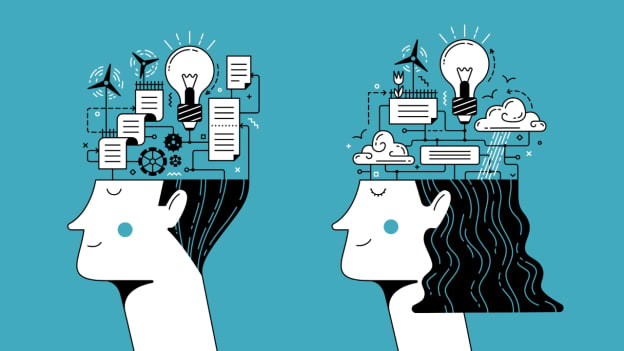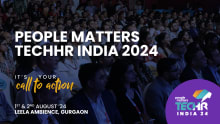DEI in engineering is not just a moral obligation but a strategic necessity

Engineering being a popular stream sees an influx of applications for admission to various courses by both male and female candidates every year. Among disciplines at the undergraduate level, enrollment is highest in Arts (33.5%), followed by Science (15.5%), Commerce (13.9%) and Engineering & Technology (11.9%).
Women’s participation in Engineering or STEAM courses has seen a gradual increase, however, their education is not getting translated into employment opportunities. The rapid digital transformation calls for an increased technologically competent employee base to bridge the demand-supply gap.
According to a report by Nasscom-Zinnov, the current demand-supply gap in tech talent at 21.1%, is the lowest among top tech locations such as the US, China, and the UK. The report further highlights that India is estimated to have 75-78 lakh tech professionals, however, the requirement may be 93-96 lakh techies, reflecting a gap of 14-19 lakh tech workforce by 2026.
“India contributes nearly 31.7% of STEM graduates globally, and the proportion of women STEM graduates increased by 45% between 2019 to 2021 alone. Yet, their employability rate seldom translates into actual jobs. This holds true not just for women but also for people with varying identities, backgrounds, and disabilities,” says Sujendra GS, Vice President, Human Resources, Creative Synergies Group.
India will need 30 million digitally skilled professionals by 2026 and fine-tuning the hiring process to make it more inclusive is a sure-shot way of bridging that skill gap. Embracing diversity is not just a moral imperative; it's a strategic advantage. But the process doesn’t end with hiring a diverse range of people; creating equitable opportunities post-hiring is crucial. “Everyone is not built the same way and the rules that govern them should not be generalised. People with disabilities, for instance, will need additional provisions and a bias-free environment to provide their best. Mentorship and training are equally essential when working with a diverse workforce,” adds Sujendra.
"A diverse engineering team can bring in alternate perspectives and help ensure our products and solutions are better, secure, and reliable. Therefore, we always seek diverse talent with various technical skills, from endpoint development to cloud expertise, Python proficiency, and cybersecurity prowess, while also looking at the desire to innovate and stop breaches. We foster a positive workplace culture, creating an inclusive, welcoming, and engaging environment based on encouragement, teamwork, and effort” says Jhilmil Kochar, Managing Director, CrowdStrike India.
Shift to skills and aptitudes must gain precedence
“Engineer's Day is a fitting occasion to enhance the world of engineering by filling the widening gap of inclusivity. While the engineering domain makes waves across the world through cutting-edge innovations and transformations, one aspect it lacks is diversity and inclusion. With about 36% female participation in India's technology workforce, it is majorly a male-dominated industry,” says Shruti Sayana, AVP - HR, NLB Services.
Additionally, challenges pertaining to the lack of academic opportunities due to prevailing biases and gender-based pay gaps across organisations, the concerns around diversity become more alarming. “More than 10% of hiring managers have expressed in the past that they consider men better in technology leadership roles, allowing female participation in leadership roles to shrink even further. In an age of hyper-digitalisation, innovation must be at the forefront. Instead of focusing on people's backgrounds and differences, the shift to skills and aptitudes must gain precedence,” adds Shruti.
Diversity fuels innovation
Diversity, Equity, and Inclusion are not just buzzwords today; they are the key pillars of progress in engineering. Engineering and innovation go hand in hand, and it's imperative that this innovation is fueled by diverse experiences, ideas, and perspectives. “Embracing diverse perspectives, fostering equal opportunities, and creating an inclusive environment within engineering not only fuels innovation but also ensures that the solutions we engineer benefit everyone in society.”
“Engineers are architects of change, and by championing diversity and equity, we construct a future where technology has no bounds and the benefits are accessible to all.”
“With opportunities and spaces for connection building, we're focused on an inclusive workplace and breaking through unconscious bias to help nurture meaningful, measurable change in our world,” says Varun Babbar, Managing Director, India & SAARC, Qlik.
“Diversity and inclusion allow for more ideas which in turn improves productivity. As people from different cultures and backgrounds work together, they bring a wealth of expertise from different walks of life. For a long time, the engineering field has been male-dominated. With the advent of flexible-work policies, and equal opportunities for women, we are marching towards a more inclusive workplace” Debbani Lahiri, Senior Manager, Platform Engineering, Ascendion.
Engineering is, at its core, the art of problem-solving. In today's world, filled with complex challenges, the need for diverse perspectives, equitable opportunities, and an inclusive environment has never been more apparent.
“When individuals from various backgrounds come together in an inclusive setting, they bring with them fresh ideas, a willingness to question the status quo, and the spark of innovation. This blend of diverse experiences and viewpoints serves as the driving force behind creativity. It leads to the development of better-designed products, more effective solutions, and improved systems, all of which benefit humanity as a whole” says Sumedha Pal, Senior Director HR, Honeywell Technology Solutions.
Engineers today are one of the key driving forces behind innovation and technological advancement, playing a pivotal role in shaping our nation's digital future. They are the architects of positive change in a world facing complex challenges. When they come from diverse backgrounds they bring unique insights, enhancing creativity, problem-solving, and economic development.
“The inclusion of diverse perspectives and backgrounds ensures that every aspiring engineer has a seat at the table, and equity paves the way for them to thrive. As we celebrate the achievements of engineers, let us also pledge to champion diversity, equity, and inclusion, for these are the pillars upon which engineering's true power to transform the world for the better firmly rests,” explains Seema Vijay Singh, CHRO, MediBuddy.
What’s a good starting point?
One way to assess inclusion in an organisation is to run data through different cohorts of employees. For example, organisations can run interview data through different cohorts to see if there are any unconscious biases that are affecting the hiring process.
“We can also look at other data, such as performance reviews and promotion decisions, to see if there are any patterns that suggest bias. We believe that diversity and inclusion are essential for a high-performing organisation. We are committed to creating a culture where everyone feels welcome and valued, regardless of their background. The best way to achieve this is to be intentional about efforts to build an inclusive culture,” says Vara Kumar Namburu, Co-founder, Head of R&D and Pre-Sales at Whatfix.
However, adding employees for the sake of tokenism will not work out well for anyone.
“The goal of promoting Diversity, Equity, and Inclusion at STL is to provide everyone with the opportunity to develop new strategies and approaches, creating a more inclusive and equitable environment throughout the entire engineering design process,” says Anjali Byce, CHRO, STL.
India has access to one of the richest engineering talent pools in the world. Engineering as a discipline calls for collaboration across people with diverse skillsets, backgrounds, and ideas to produce solutions to complex problems. It is therefore not only imperative to include women and underrepresented groups into the workforce, but it is the organisations’ job to make sure that their voices are valued, and that they have access to the same opportunities as other more privileged groups.









